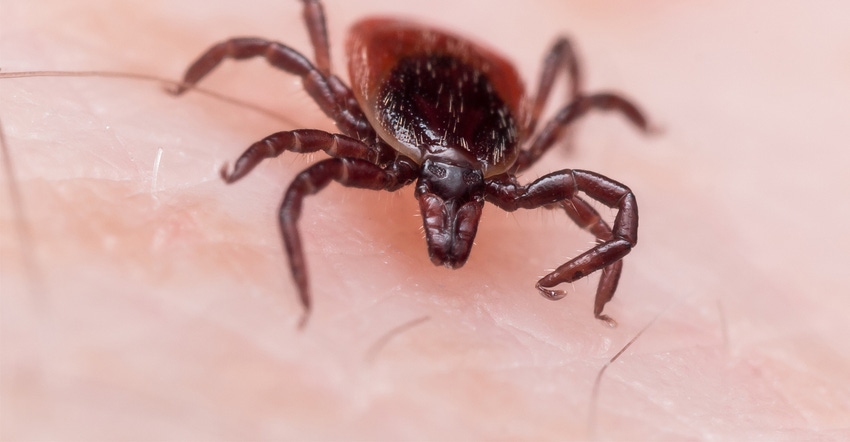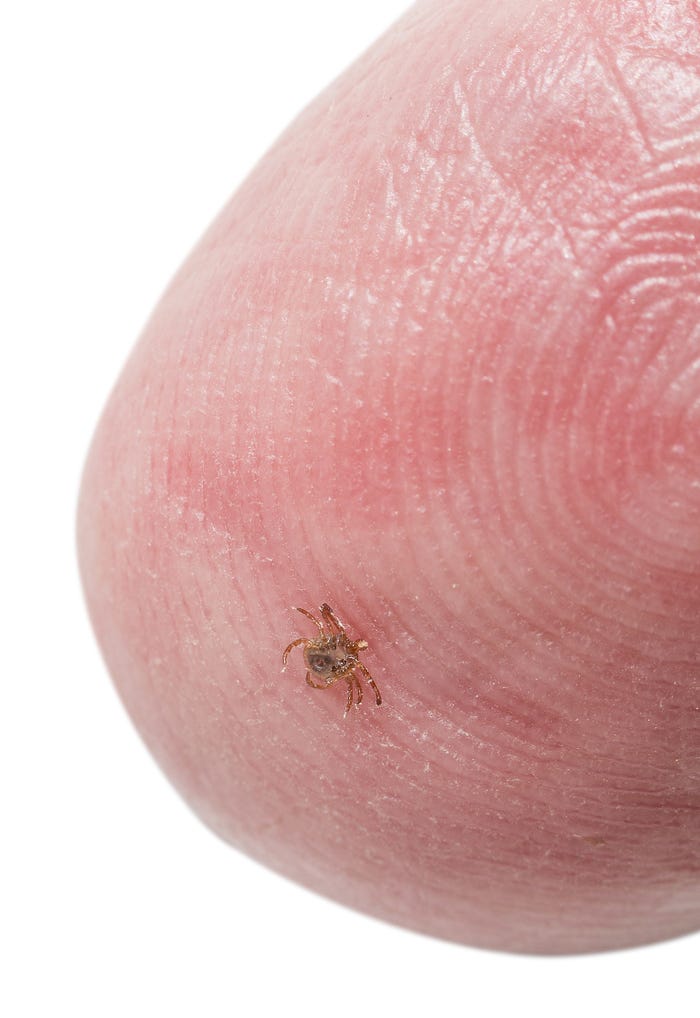June 15, 2017

Just thinking about ticks can make your skin itch, and for good reason — even without one crawling up your pant leg or down your shirt collar. Even mite-sized, black-legged deer tick nymphs can transmit Lyme disease. So beware, and take preventive action.
The impression that tick populations are higher this spring may stem from the fact that ticks emerged earlier than usual from winter dormancy, says Joyce Sakamoto, a Penn State University research entomologist. She started seeing active adult ticks in February.
Between 40% and 60% of the ticks she tests carry the Lyme disease pathogen. Pennsylvania leads the nation in the number of confirmed cases.
While not all are capable of transmitting the illness, the long-term trend is headed higher. Ticks carrying Lyme disease were rare in many Pennsylvania counties 15 to 20 years ago. Today, they’re found in all counties and throughout the Northeast. The disease is most often transmitted to humans by nymph ticks, probably because they go unnoticed and typically have more time to transmit the infection before detection, explains Sakamoto.
Adult ticks can be active from fall through spring if temperatures remain above 28 degrees F. Tiny, mite-sized nymphs are active in May, June and July. While awaiting suitable hosts, they usually are found in leaf litter or on low branches in brushy, wooded areas.

PIN HEAD-SIZED PREDATOR: Tiny nymph ticks — not adult ticks — are the most common Lyme bacterium transmitters to humans.
4 preventive strategies
Penn State Extension entomologist Steve Jacobs recommends avoiding tick-infested areas such as woods with a high deer population, especially in May, June and July when the nymphs are active. He urges taking the following precautions when you are going to be in brushy areas:
• Wear light-colored clothing so ticks can be spotted more easily.
• Spray insect repellent containing DEET on clothes and on exposed skin other than the face, or treat clothes — especially pants, socks and shoes — with permethrin, which kills ticks on contact.
• Thoroughly examine yourself for ticks when returning from the woods or tall grassy areas. Be especially vigilant near perimeter areas of tick habitat, such as the edge of woods and along paths and trails.
• Know the signs of Lyme disease and see your doctor if symptoms develop. Lyme disease can cause a variety of symptoms, including a bull's-eye-like rash, fever, stiff neck, muscle aches and headaches. Left untreated, victims can suffer facial palsy, arthritis and even paralysis. It normally is treated with antibiotics. If not caught early, recovery can be slow and difficult.
• If a tick is already attached, carefully remove it by grasping it with tweezers as close to the skin as possible, then slowly and steadily pull straight back, advises Jacobs. Avoid crushing the tick's body.
Learn more about black-legged ticks and Lyme disease at Penn State’s Entomology Department's website.
You May Also Like




